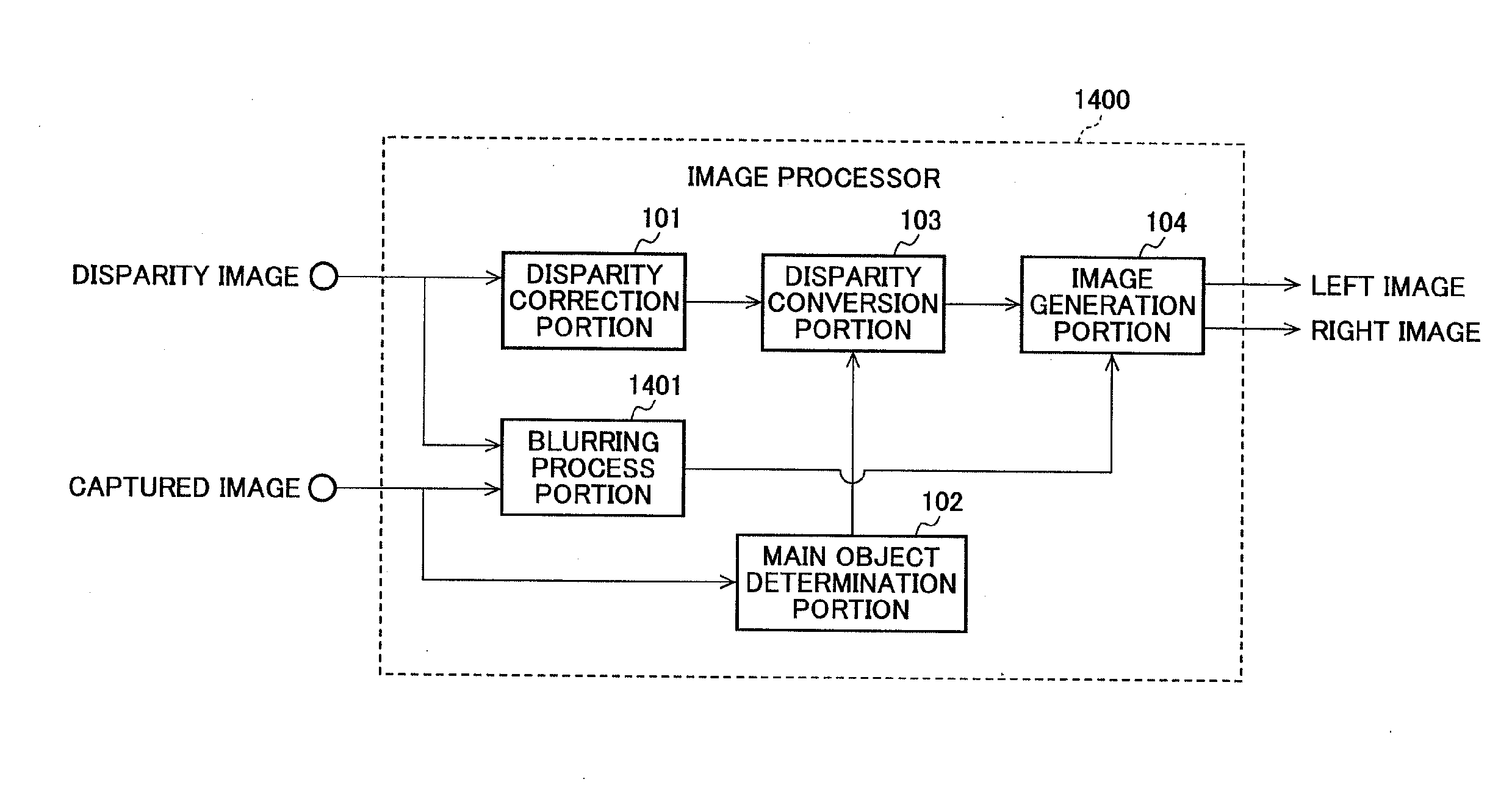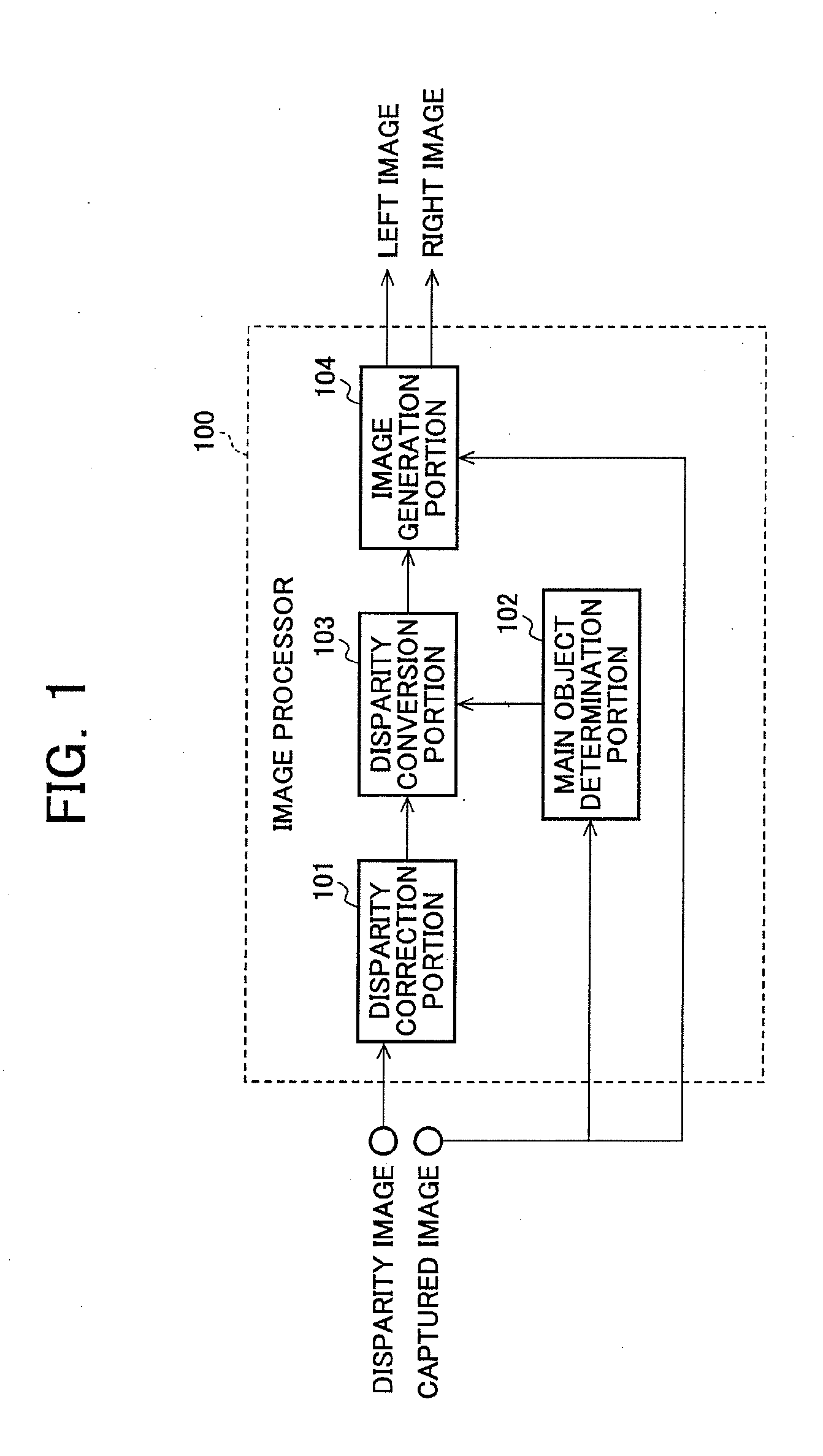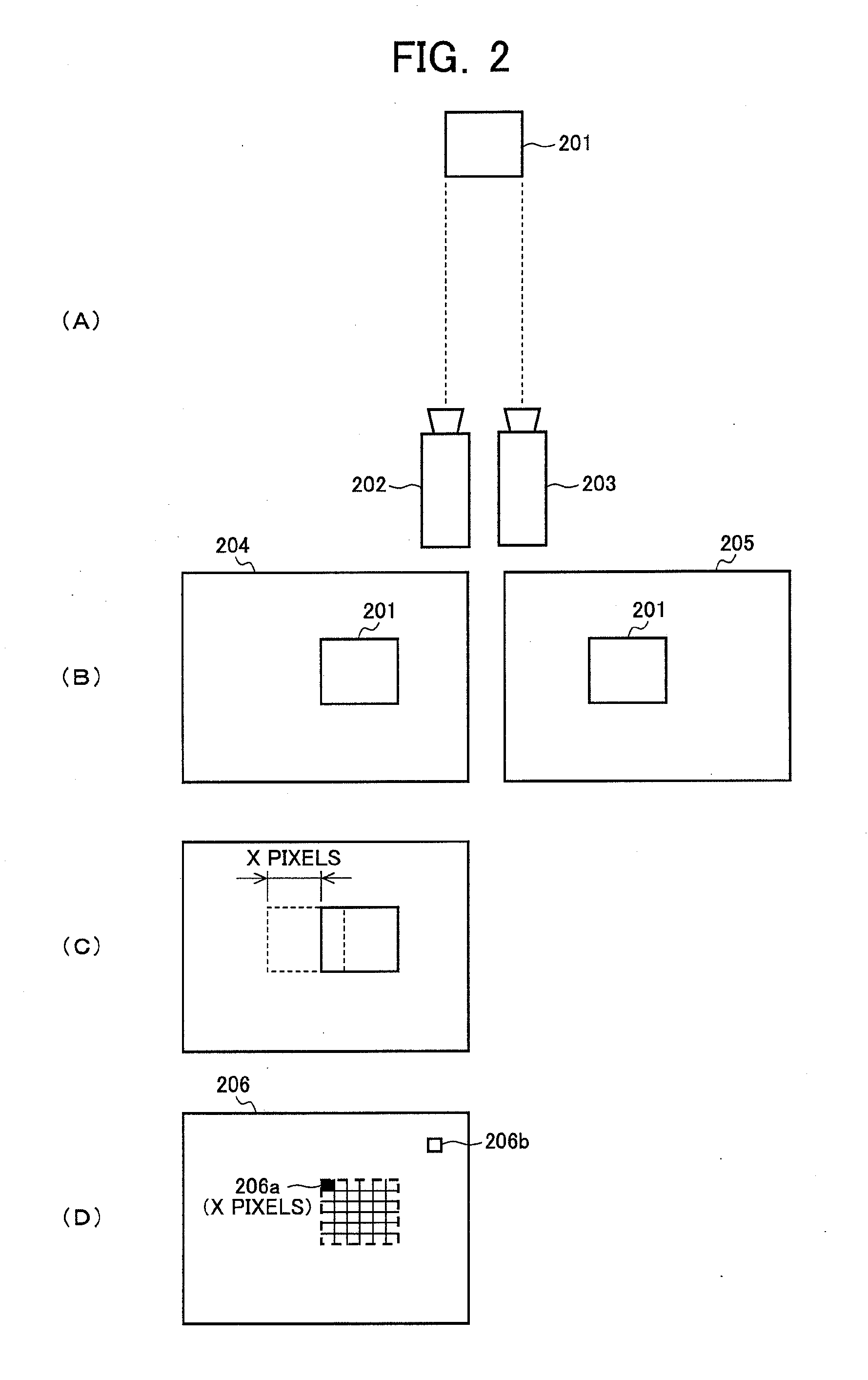Image processor, image display apparatus, and image taking apparatus
a technology of image processing and image display, applied in the direction of electrical devices, instruments, computing, etc., can solve the problems of limited depth (projection, depression), stereoscopic viewing impossible, visual fatigue, etc., and achieve the effect of hardly causing fatigue, easy adjustment of three-dimensional effects, and easy enhancement of three-dimensional effects
- Summary
- Abstract
- Description
- Claims
- Application Information
AI Technical Summary
Benefits of technology
Problems solved by technology
Method used
Image
Examples
first embodiment
[0044]The present invention will now be described in detail with reference to the drawings. Configurations in the drawings are exaggeratingly depicted to facilitate understanding and have intervals and sizes different from actual configurations.
[0045]FIG. 1 is a functional block diagram of an image processor 100 of the present invention described in a first embodiment.
[0046]The image processor 100 is made up of a disparity correction portion 101, a main object determination portion 102, a disparity conversion portion 103, and an image generation portion 104 and uses a captured image from one view point and a disparity image corresponding to the captured image as inputs to generate a three-dimensional image based on the captured image and the disparity image.
[0047]A disparity image input from an external device (not depicted) etc., is input to the disparity correction portion 101. A captured image input from an external device etc., is input to the main object determination portion 1...
second embodiment
[0112]A second embodiment of the present invention will hereinafter be described in detail with reference to the drawings. However, the portions having the same functions as the first embodiment are denoted by the same reference numerals.
[0113]FIG. 11 is a functional block diagram of an image processor 1100 of the present invention described in the second embodiment.
[0114]The image processor 1100 is formed by adding a disparity calculation portion 1101 to the image processor 100 described with reference to FIG. 1 and uses two captured images acquired by shooting an identical object from two viewing positions as inputs to generate a three-dimensional image based on the captured images.
[0115]The two captured images acquired by shooting an identical object from at least two viewing positions are input to the disparity calculation portion 1101. Any one of the two captured images is input to the main object determination portion 102 and the image generation portion 104. One captured imag...
third embodiment
[0129]A third embodiment of the present invention will hereinafter be described in detail with reference to the drawings. However, the portions having the same functions as the first embodiment are denoted by the same reference numerals.
[0130]FIG. 14 is a functional block diagram of an image processor 1400 of the present invention described in the third embodiment.
[0131]The image processor 1400 of FIG. 14 is formed by adding a blurring process portion 1401 to the image processor 100 described with reference to FIG. 1.
[0132]A disparity image input from an external apparatus etc., is input to the disparity correction portion 101 and the blurring process portion 1401. A captured image input from an external apparatus etc., is input to the main object determination portion 102 and the blurring process portion 1401.
[0133]The blurring process portion 1401 executes a blurring process for a pixel value of the captured image corresponding to an object having a disparity equal to or less than...
PUM
 Login to View More
Login to View More Abstract
Description
Claims
Application Information
 Login to View More
Login to View More - R&D
- Intellectual Property
- Life Sciences
- Materials
- Tech Scout
- Unparalleled Data Quality
- Higher Quality Content
- 60% Fewer Hallucinations
Browse by: Latest US Patents, China's latest patents, Technical Efficacy Thesaurus, Application Domain, Technology Topic, Popular Technical Reports.
© 2025 PatSnap. All rights reserved.Legal|Privacy policy|Modern Slavery Act Transparency Statement|Sitemap|About US| Contact US: help@patsnap.com



